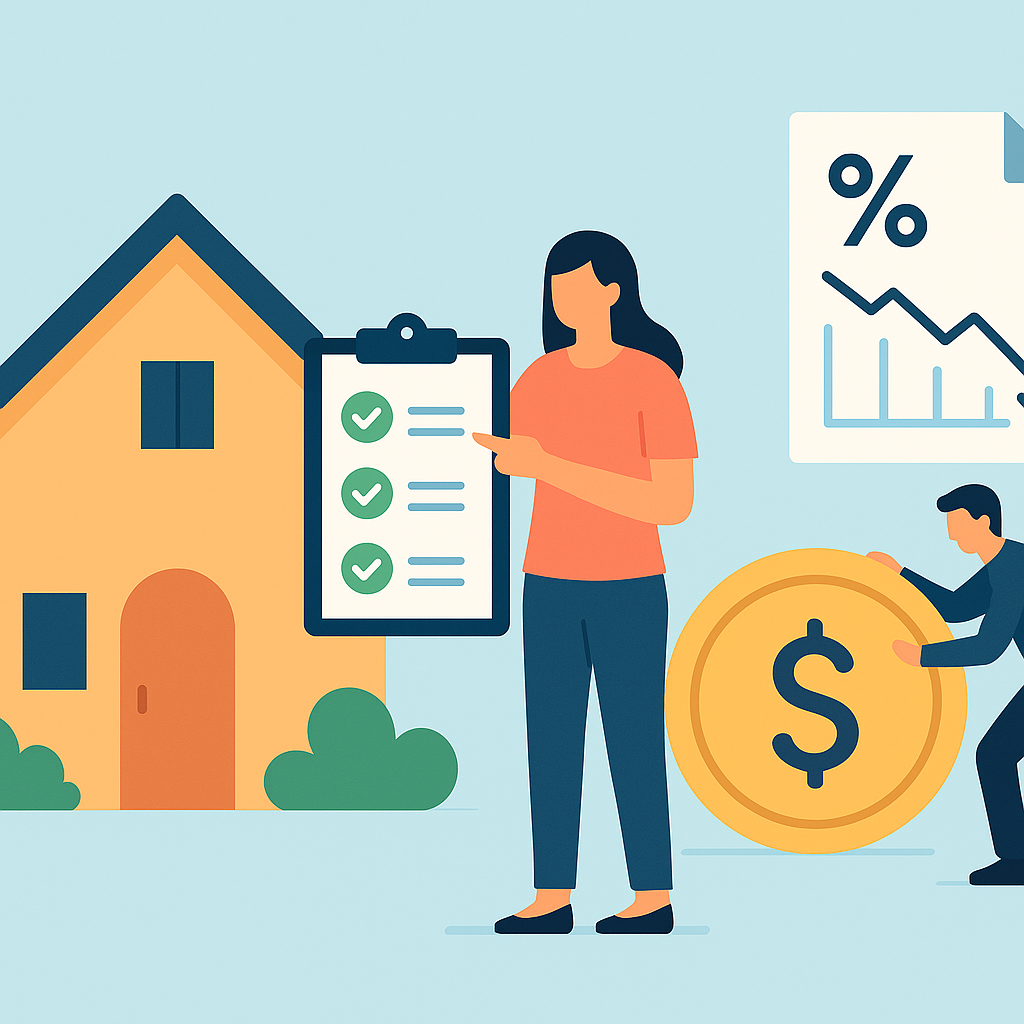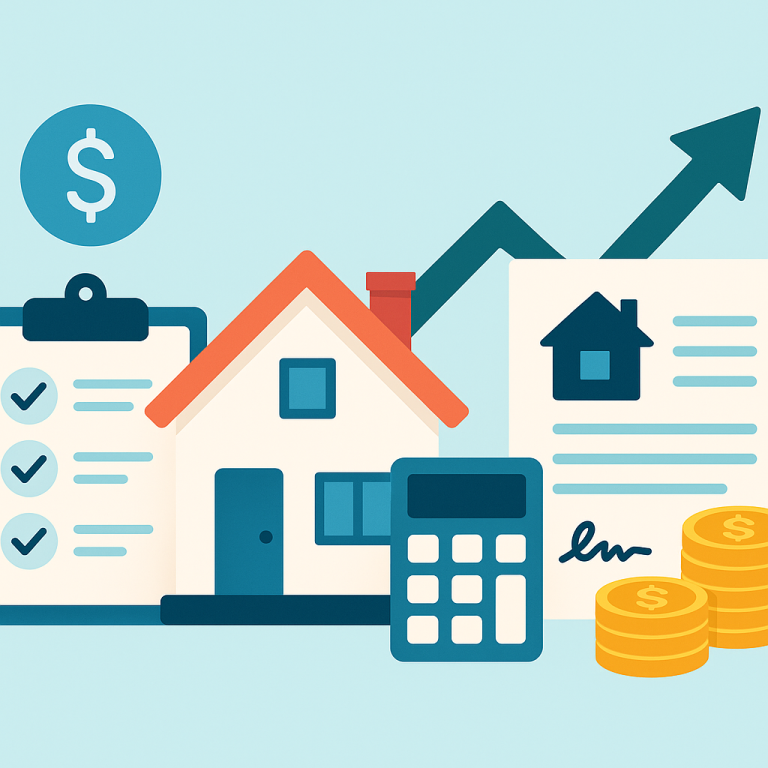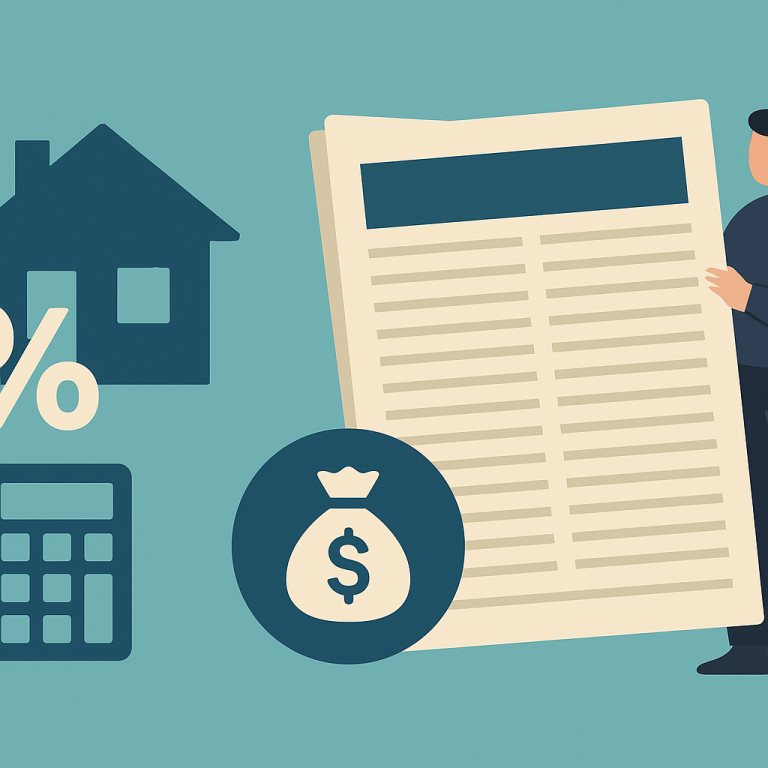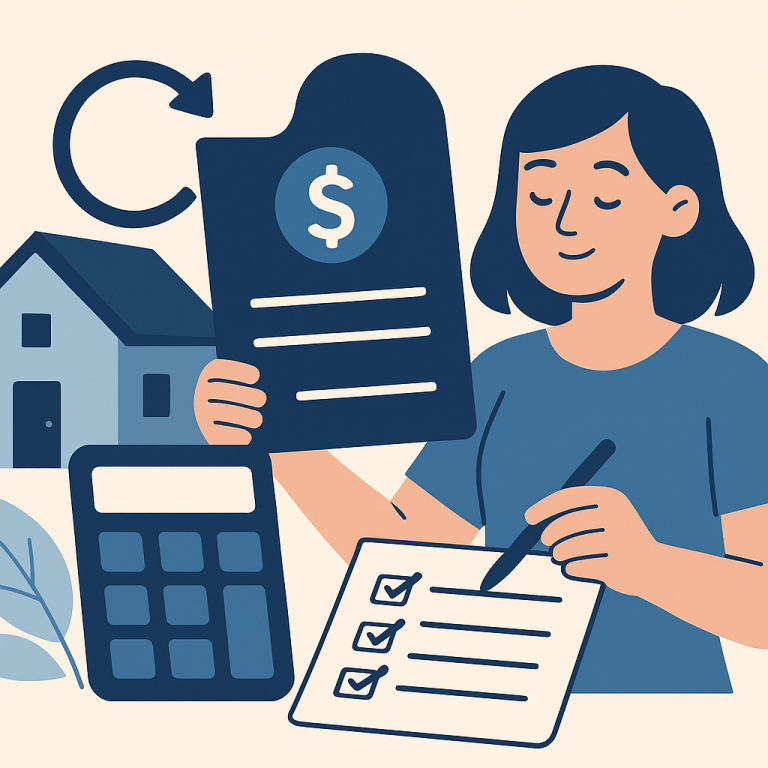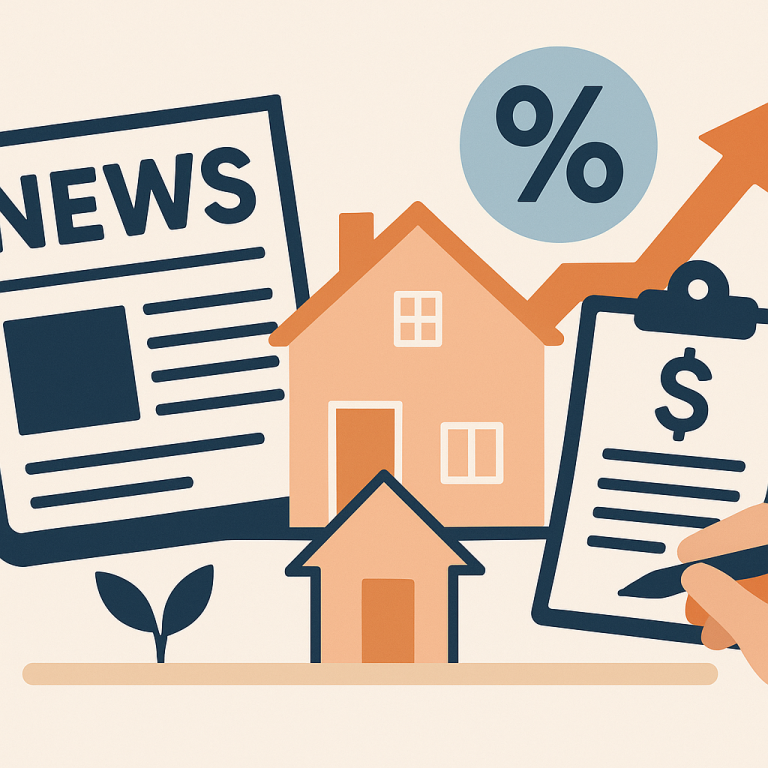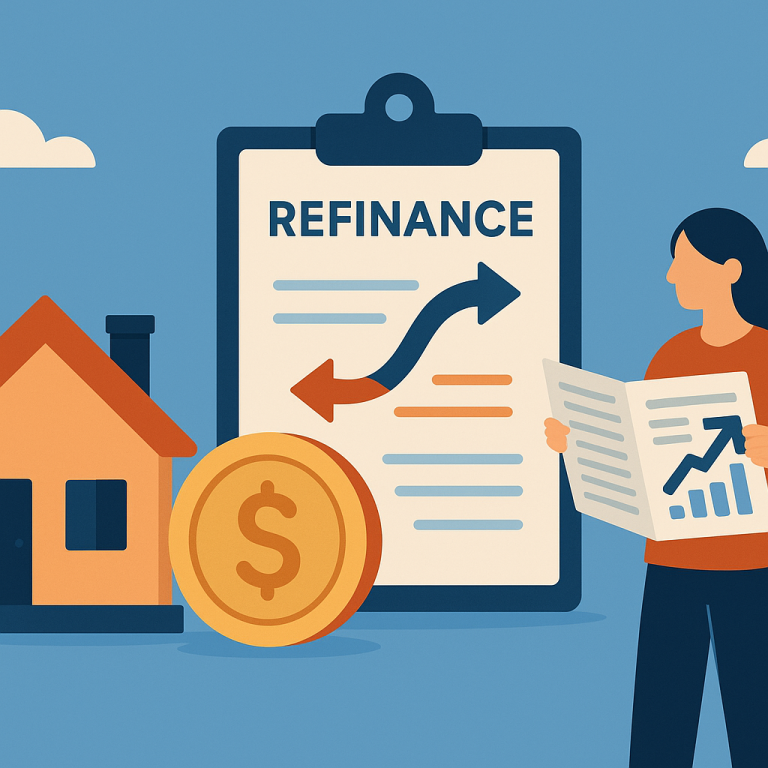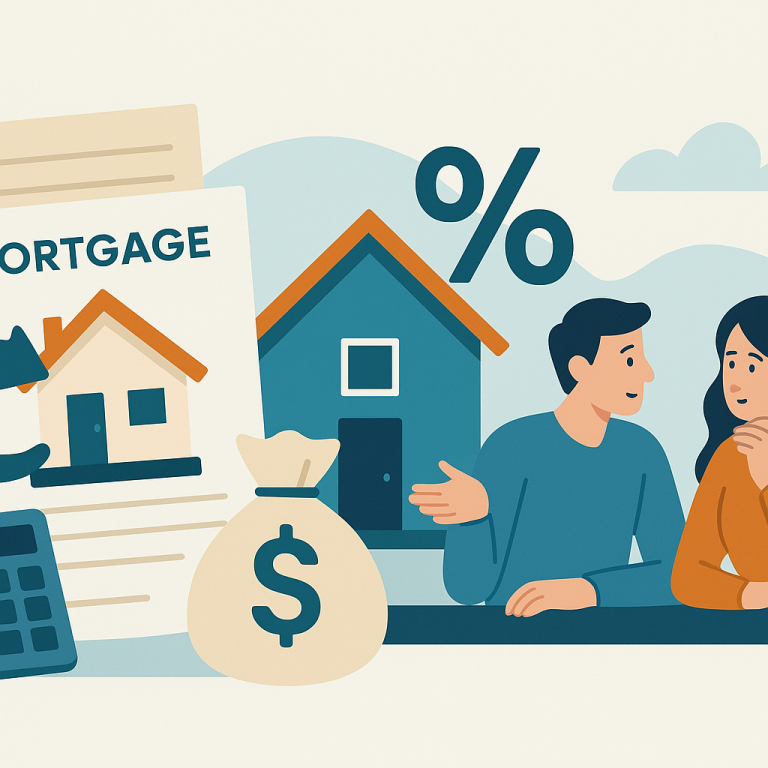Refinance guide rate-and-term refinance vs cash-out
Rate‑and‑Term Refinance vs Cash‑Out Refinance: Which Is Right for Your Home?
Refinancing means replacing your current mortgage with a new one. Two common types are the rate‑and‑term refinance and the cash‑out refinance. Understanding the difference helps you decide whether to lower your payment, shorten your mortgage, or tap home equity for cash.
What Each One Is and When It Makes Sense
Rate‑and‑term refinance changes the interest rate, the loan term (length), or both—without increasing the principal balance to take cash out. Homeowners typically use it to get a lower interest rate, move from an adjustable‑rate to a fixed‑rate loan, or shorten their term (for example, from a 30‑year to a 15‑year mortgage).
Cash‑out refinance replaces your existing mortgage with a larger loan, and you receive the difference in cash. It’s commonly used for home improvements, paying off high‑interest debt, funding major expenses, or consolidating other loans.
When it makes sense:
- Rate‑and‑term: when current rates are meaningfully lower than your rate (commonly 0.5–1.0% or more), or you want to shorten the term and can afford higher monthly payments.
- Cash‑out: when you need lump‑sum cash and the benefits (improvements, high‑interest debt reduction) outweigh higher costs or slightly higher interest rates.
Benefits and Drawbacks
Rate‑and‑term refinance — Benefits
- Lower interest rate can reduce monthly payments and total interest paid.
- Switching to a shorter term accelerates equity building and saves interest over the life of the loan.
- Often preserves existing equity and does not increase outstanding debt.
Rate‑and‑term refinance — Drawbacks
- Closing costs can be substantial; savings must exceed costs over a reasonable period.
- Extending the term can increase total interest paid even if the rate is lower.
Cash‑out refinance — Benefits
- Provides a large lump sum at typically lower rates than unsecured loans or credit cards.
- Can fund home improvements that increase property value or consolidate higher‑interest debt.
- May simplify multiple payments by combining debt into one mortgage payment.
Cash‑out refinance — Drawbacks
- Usually comes with a higher interest rate than a rate‑and‑term refinance.
- Reduces home equity and increases monthly payments if you don’t keep term constant.
- May trigger mortgage insurance if your loan‑to‑value (LTV) exceeds program limits.
Costs and Fees
Both refinances carry closing costs that typically range from about 2% to 6% of the loan amount. Common fees include:
- Origination or underwriting fee
- Appraisal fee
- Title search and insurance, recording fees
- Credit report and flood certification
- Discount points (optional) to buy a lower rate
Cash‑out refinances can be slightly more expensive and sometimes carry higher rates. If a cash‑out pushes LTV above 80%, expect private mortgage insurance (PMI) for conventional loans. FHA cash‑outs have their own upfront mortgage insurance premium and ongoing MIP rules.
Step‑by‑Step Process
- Assess goals: Decide whether your priority is lower payments, paying off the mortgage sooner, or accessing cash.
- Check credit and finances: Review your credit score, current debt, and income. Better credit gets better rates.
- Estimate equity: Calculate your LTV. For a cash‑out, lenders typically limit LTV (often up to 80% for conventional cash‑out).
- Shop lenders: Get multiple Loan Estimates to compare rates, fees, and cash received for cash‑out options.
- Run break‑even numbers: Divide total closing costs by monthly savings to find months-to-breakeven. Ensure that period aligns with how long you plan to stay in the home.
- Apply and lock rate: Submit documents (pay stubs, tax returns, bank statements), select the loan, and lock the rate if you’re comfortable.
- Appraisal and underwriting: Lender orders an appraisal and completes underwriting. Expect requests for additional documentation.
- Clear to close and signing: Once approved, you’ll get a Closing Disclosure, sign loan documents, and receive funds at closing (cash‑out) or start the new loan (rate‑and‑term).
Common Pitfalls to Avoid
- Chasing a tiny rate drop: If monthly savings don’t cover closing costs in a reasonable timeframe, refinancing may not be worth it.
- Using cash‑out for consumption: Spending cash‑out proceeds on depreciating items (vacations, cars) can leave you with more debt and less equity.
- Not considering PMI or higher rates: Cash‑out or higher LTV can increase costs and monthly payment through PMI or higher interest rates.
- Ignoring appraisal risk: A lower appraisal reduces the amount you can borrow for cash‑out or may disqualify the refinance.
- Resetting the amortization clock without planning: Extending to a new 30‑year term can reduce payments but increase total interest paid.
- Seasoning and program limits: Some lenders and programs require you to hold a mortgage for a minimum time before a cash‑out refinance is allowed.
Short FAQ
Q: How much cash can I get with a cash‑out refinance?
A: It depends on your home’s appraised value and the lender’s maximum LTV. For conventional loans, lenders commonly allow up to 80% LTV; FHA and VA have their own rules and limits.
Q: Will a cash‑out refinance raise my interest rate?
A: Often yes—cash‑out loans typically carry slightly higher rates than rate‑and‑term refinances because you’re borrowing more and increasing LTV. Compare offers to see the difference.
Q: How long until I break even on a refinance?
A: Divide total closing costs by the monthly savings to find the break‑even period. If you expect to stay in the home longer than that, the refinance is more likely to make financial sense.
Q: Are cash‑out proceeds taxable?
A: Generally a cash‑out refinance itself is not taxable income. Interest deduction rules depend on how you use the funds—interest on cash used for home improvements may be deductible; consult a tax advisor for specifics.
Choosing between a rate‑and‑term and a cash‑out refinance depends on your financial goals: lower payments and interest versus accessing equity for large needs. Run the numbers, compare lender offers, and avoid decisions that increase long‑term costs for short‑term convenience.
META: topic=rate-and-term vs cash-out refinance; length=~1000 words; audience=homeowners

